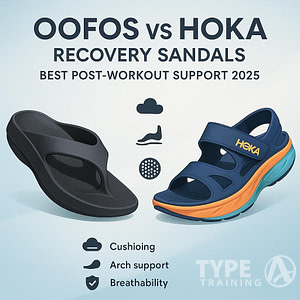Recent research has uncovered concerning findings about the materials used in smartwatch bands. A study examining various smartwatch and fitness tracker bands found elevated levels of per- and polyfluoroalkyl substances (PFAS) in several samples.
The investigation covered a range of brands and price points, revealing that even some inexpensive bands contained PFAS.
Interestingly, bands costing over $30 tended to have higher fluorine levels, indicating a greater likelihood of PFAS presence. This discovery raises questions about the safety of wearable consumer products that come into prolonged contact with your skin.
Popular posts:
As a smartwatch or fitness tracker user, you might be wondering about the implications of these findings. While the long-term effects of PFAS exposure from wearable devices are not yet fully understood, this study highlights the importance of being informed about the materials in your everyday consumer products.
Key Takeaways
- Smartwatch and fitness tracker bands may contain PFAS, which can be absorbed through skin contact.
- Higher-priced bands were found to have elevated levels of PFAS compared to less expensive options.
- Consumers should be aware of the materials used in their wearable devices and consider alternatives when possible.
Background on PFAS
PFAS are synthetic chemicals with widespread use and concerning health effects. Their unique properties make them valuable in many products, but also persistent in the environment and human bodies.
Chemical Properties of PFAS
PFAS, or per- and polyfluoroalkyl substances, are a group of man-made chemicals characterized by strong carbon-fluorine bonds. This bond gives PFAS exceptional stability and resistance to degradation.
PFAS are often called “forever chemicals” due to their persistence in the environment and living organisms. They repel both water and oil, making them useful in many applications.
There are thousands of PFAS compounds, each with slightly different properties. Common types include PFOA, PFOS, and PFHxA.
Common Uses of PFAS in Consumer Products
You encounter PFAS in many everyday products due to their unique properties. They are used in:
- Non-stick cookware
- Water-resistant clothing and gear
- Stain-resistant carpets and furniture
- Food packaging
- Firefighting foam
- Cosmetics and personal care items
Fitness trackers and smartwatch bands have recently been found to contain PFAS, particularly in higher-priced models. These chemicals help make the bands water-resistant and durable.
Health Implications of PFAS Exposure
PFAS exposure has been linked to various health concerns. You can be exposed through contaminated water, food, or direct contact with PFAS-containing products.
Potential health effects include:
- Increased cancer risk, especially testicular cancer
- Developmental delays and low birth weight in infants
- Hormonal imbalances
- Immunosuppression
- High
blood pressure
PFAS can accumulate in your body over time. They may be absorbed through skin contact, ingestion, or inhalation.
Research is ongoing to fully understand the long-term impacts of PFAS exposure. Current evidence suggests minimizing exposure is prudent for your health.
Smartwatches and Fitness Trackers
Wearable devices have become increasingly popular, offering convenient health tracking and connectivity. These devices come with potential concerns about materials used in their construction and how they interact with users’ bodies.
Overview of Wearable Devices
Smartwatches and fitness trackers are compact, wrist-worn devices that monitor various health metrics and provide smartphone-like functionalities.
You’ll find a wide range of features, including heart rate monitoring, step counting, and sleep tracking.
Many popular brands offer these devices, with varying levels of sophistication. Some focus primarily on fitness, while others serve as extensions of your smartphone.
Wearable technology has evolved rapidly, with 1 in 5 Americans now using smartwatches or fitness trackers regularly. This widespread adoption highlights the importance of understanding the materials used in their construction.
Material Use in Band Manufacturing
The bands of smartwatches and fitness trackers often use synthetic materials for durability and comfort.
Fluoroelastomers are commonly used due to their flexibility and resistance to sweat and oils.
Recent research has detected elevated levels of PFAS in some fitness tracker and smartwatch bands. PFAS, or per- and polyfluoroalkyl substances, are known as “forever chemicals” due to their persistence in the environment.
The study found varying levels of PFAS across different brands and models. Notably, perfluorohexanoic acid (PFHxA) was found at the highest levels in the tested bands.
Consumer Interaction with Wearable Devices
You typically wear smartwatches and fitness trackers in direct contact with your skin for extended periods. This prolonged skin contact raises questions about potential exposure to materials in the bands.
The comfort of the band plays a crucial role in user experience. Manufacturers often prioritize materials that are flexible, durable, and resistant to sweat and water.
Some users may experience skin irritation or allergic reactions to certain band materials. If you notice any discomfort, consider switching to a different band material or consulting with a dermatologist.
To minimize potential exposure to PFAS, you can:
- Remove your device while showering or swimming
- Clean your wristband regularly
- Consider alternative band materials like fabric or leather
Researchers are calling for more studies on PFAS leaching from wristbands into wearers’ skin. As a consumer, staying informed about these developments can help you make educated choices about your wearable devices.
PFAS in Smartwatch Bands
Recent studies have uncovered concerning levels of per- and polyfluoroalkyl substances (PFAS) in many smartwatch bands. These “forever chemicals” raise questions about potential health impacts and regulatory oversight.
Assessment of PFAS Use in Bands
Researchers have detected elevated levels of PFAS in various smartwatch and fitness tracker bands. The study examined both new and used bands across different price points.
Higher-end bands often contain fluoroelastomers, synthetic rubbers made from PFAS chains. These materials provide durability and dirt resistance, making them ideal for sweaty workouts. However, they also introduce PFAS into direct skin contact. Some key findings include:
- High-end bands showed greater total fluorine content
- Perfluorohexanoic acid (PFHxA) was frequently detected
- Inexpensive bands (<$15) generally had lower PFAS levels
Health Risks from PFAS in Bands
While the full health implications remain unclear, there are concerns about prolonged skin exposure to PFAS. These chemicals can potentially:
- Absorb through the skin, especially during exercise
- Accumulate in the body over time
- Interfere with hormone function
- Impact immune system health
You should be aware that sweat and friction may increase PFAS transfer from bands to your skin. However, more research is needed to quantify the exact risks from this exposure route.
Regulations and Industry Response
Currently, there are no specific regulations addressing PFAS in smartwatch bands. The findings have prompted calls for:
- Further investigation into PFAS exposure from wearable devices
- Development of industry standards for PFAS content in bands
- Improved labeling to inform consumers about material composition
Some manufacturers may proactively seek PFAS-free alternatives. As a consumer, you can choose bands made from other materials to minimize potential PFAS exposure. Stay informed about ongoing research and potential future regulations in this area.
Scientific Studies and Evidence
Recent studies have shed light on the presence of PFAS in smartwatch bands. These investigations employ sophisticated detection methods and reveal concerning findings about PFAS levels in wearable devices.
Methods for Detecting PFAS
Scientists use several advanced techniques to detect PFAS in smartwatch bands.
Particle-induced gamma-ray emission helps measure total fluorine content, providing an initial indicator of PFAS presence.
Liquid chromatography-tandem mass spectrometry offers a more detailed analysis, identifying specific PFAS compounds. This method allows researchers to quantify individual PFAS concentrations accurately.
Researchers also examine fluorine concentrations as a proxy for PFAS presence. Higher fluorine levels often correlate with increased PFAS content in materials.
These methods enable scientists to comprehensively assess PFAS contamination in wearable devices, ensuring accurate and reliable results.
Recent Findings on PFAS in Wearables
A study from the University of Notre Dame tested 22 smartwatch bands and found PFAS in 15 of them. Some bands contained alarmingly high concentrations, exceeding 16,000 parts per billion.
Perfluorohexanoic acid (PFHxA) was detected in nine of the tested bands. This finding raises concerns about potential PFAS exposure through skin contact with these devices.
Higher-priced bands (over $30) tended to contain more fluorine than cheaper alternatives. This suggests that even premium products may pose PFAS-related risks.
Some bands not advertised as fluoroelastomers still contained fluorine, indicating possible PFAS presence. This highlights the need for more transparent product labeling and stricter regulations.
Consumer Perspectives and Alternatives
Smartwatch users are increasingly concerned about potential health risks from PFAS in watch bands. Manufacturers are responding with new material options to address these worries.
Demand for PFAS-Free Products
You may be among the growing number of consumers seeking PFAS-free wearables. Recent studies have heightened awareness of PFAS in smartwatch bands, leading to increased demand for safer alternatives. Many users are now prioritizing health considerations alongside device features when making purchasing decisions.
Manufacturers are taking note of this shift in consumer preferences. Some companies have begun labeling their products as PFAS-free to attract health-conscious buyers. You can look for these labels when shopping for new devices or replacement bands.
Alternative Materials for Bands
Several PFAS-free materials are available for smartwatch bands:
- Silicone: Soft, flexible, and widely used
- Nylon: Durable and breathable
- Leather: Classic look with various finishes
- Stainless steel: Sleek and long-lasting
- Recycled plastics: Eco-friendly option
When choosing a band, consider factors like comfort, durability, and skin sensitivity. Silicone bands offer a good balance of flexibility and durability. Meanwhile, nylon straps provide breathability for active wear.
Leather bands offer a more formal look but may require more care. Some high-end smartwatches now come with PFAS-free fluoroelastomer bands. These combine the benefits of traditional fluoroelastomers with improved safety. You can also find third-party bands made from these newer materials.
Brand Initiatives and Sustainability
Several smartwatch manufacturers are addressing PFAS concerns in their products. Companies are exploring sustainable alternatives and implementing policies to reduce or eliminate these chemicals from their wearable devices.
Brand-Specific Policies on PFAS Usage
Apple has committed to phasing out PFAS in all its products by 2025. The company is actively working to remove these chemicals from watch bands and other accessories. Samsung has also announced plans to eliminate PFAS from its product lines, including smartwatches and fitness trackers.
Google, which owns Fitbit, has stated its intention to reduce PFAS usage in wearable devices. They’re focusing on developing alternative materials that maintain durability without relying on harmful chemicals.
Some brands now offer PFAS-free options, allowing you to choose safer alternatives. When shopping for a new smartwatch or fitness tracker, look for products explicitly labeled as PFAS-free to minimize your exposure.
Innovations in Sustainable Wearable Products
Manufacturers are exploring eco-friendly materials for watch bands. Recycled plastics, organic fabrics, and plant-based alternatives are becoming more common in wearable consumer products.
Some companies are developing biodegradable watch bands to reduce environmental impact. These bands break down naturally over time, decreasing long-term pollution concerns.
Innovations in water-resistant coatings without PFAS are also emerging. These new technologies aim to provide the same functionality as PFAS-containing materials without the associated health and environmental risks.
You can support these initiatives by choosing products from brands prioritizing sustainability. Look for smartwatches and fitness trackers that use recycled or eco-friendly materials in their construction.
Implications for Public Health and Policy
Recent findings on PFAS in smartwatch bands raise significant concerns for consumer health and regulatory oversight. The presence of these chemicals in everyday wearables highlights the need for immediate action to protect public well-being and strengthen policy frameworks.
Impact of PFAS on Health Conditions
PFAS exposure through smartwatch bands can lead to serious health risks. You may face increased chances of immunosuppression, making your body less able to fight off infections. Hormonal disruption is another potential effect, which can interfere with your body’s natural processes.
Developmental delays in children are a particular concern, as PFAS exposure can impact growth and learning. Perhaps most alarmingly, these chemicals have been linked to heightened cancer risk. The cumulative exposure from daily wear of contaminated bands may amplify these dangers over time.
Policy Actions and Regulation Considerations
Current regulatory frameworks need updating to address PFAS in consumer electronics. You should be aware that legislation specifically targeting smartwatch bands is lacking. Policymakers must consider:
- Mandatory testing and labeling of PFAS content in wearables
- Stricter production standards to limit or eliminate PFAS use
- Enhanced consumer education on PFAS risks in everyday products
Researchers are calling for action to protect public health. You deserve to know what’s in the products you wear daily. Implementing a comprehensive regulatory approach will help safeguard your health and inform your consumer choices.
Frequently Asked Questions
Recent studies have uncovered concerning levels of PFAS in some smartwatch bands. These findings raise important questions about safety, manufacturing processes, and potential alternatives for consumers.
What are the potential health risks associated with PFAS in smartwatch bands?
PFAS exposure has been linked to various health issues, including liver damage, thyroid problems, and certain cancers. Long-term contact with PFAS-containing materials may increase these risks.
Prolonged skin contact with PFAS could potentially lead to accumulation in the body over time. However, more research is needed to fully understand the specific risks associated with wearable devices.
How do PFAS compounds end up in smartwatch bands?
PFAS are often added to smartwatch bands for their water-repellent and oil-resistant properties. Manufacturers use these chemicals to improve the durability and performance of the bands, especially in high-end models.
The production process incorporates PFAS into materials like fluoroelastomer, which is prized for its flexibility and resistance to sweat.
Can PFAS from smartwatch bands be absorbed through the skin?
While research is ongoing, there is concern that PFAS could potentially be absorbed through the skin. Factors like sweat, friction, and prolonged contact may increase the likelihood of absorption.
The extent of absorption and its health impacts are still being studied. It’s important to note that individual factors may affect the potential for PFAS absorption.
Are there any smartwatch bands available that are free of PFAS?
Some manufacturers are beginning to offer PFAS-free alternatives in response to growing concerns. These bands may be made from materials like silicone or natural rubber.
You can look for bands explicitly labeled as PFAS-free or those made from non-fluorinated materials. However, it’s important to verify claims with the manufacturer or independent testing.
What methods are used to test for the presence of PFAS in wearable technology?
Scientists use advanced analytical techniques such as liquid chromatography and mass spectrometry to detect and measure PFAS in smartwatch bands. These methods can identify specific PFAS compounds and their concentrations.
Researchers have found elevated levels of certain PFAS, like PFHxA, in multiple wristbands tested.
How often do manufacturers test smartwatch bands for PFAS contamination?
Testing frequency varies among manufacturers. Many do not publicly disclose their testing protocols. Some companies may conduct periodic testing as part of quality control measures.
In some countries, regulatory bodies are beginning to require more frequent testing and disclosure of PFAS content in consumer products, including wearable technology.















